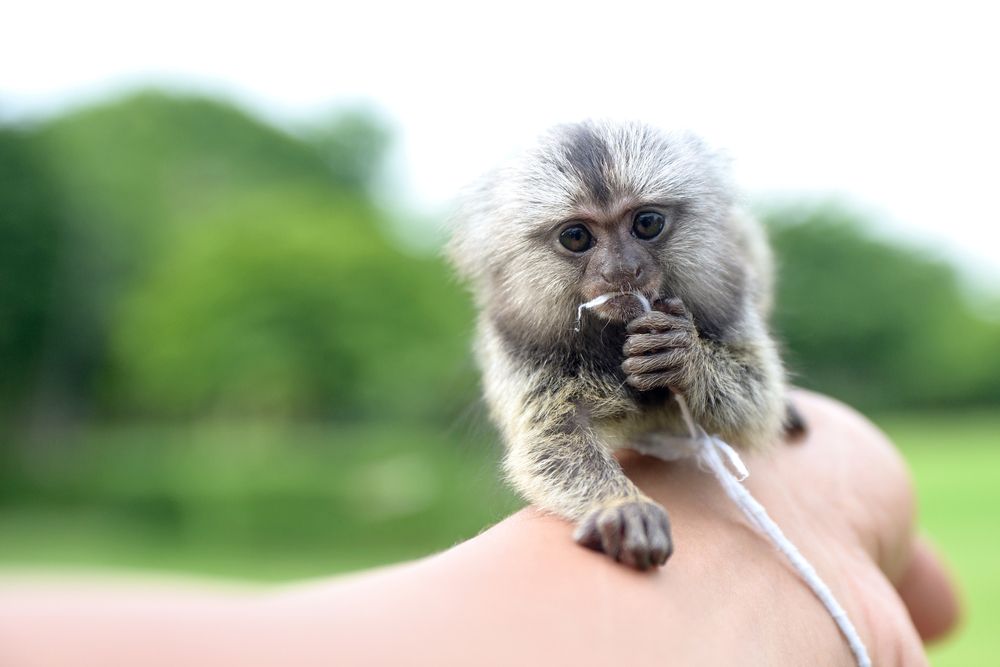Marmoset Monkeys, Marmoset monkeys are among the smallest primates in the world, captivating animal lovers and researchers alike with their expressive faces, quick movements, and fascinating behaviors. Native to the forests of South America, particularly Brazil, these tiny creatures belong to the Callitrichidae family and are known for their unique physical features and social lifestyles.
Characteristics of Marmoset Monkeys
Marmoset monkeys typically measure between 6 and 10 inches in body length, with tails that can be even longer. They weigh less than one pound, making them incredibly light and agile. One of their most distinguishing traits is their large, curious eyes and tufts of fur on their ears, especially prominent in species like the common marmoset (Callithrix jacchus).
Unlike larger primates, marmosets have claws instead of nails on most of their fingers, which helps them grip tree trunks and branches as they leap from one to another in the forest canopy. Their teeth are specially adapted for gnawing into tree bark to access sap, a major part of their diet.
Social Behavior and Communication
Marmoset monkeys live in close-knit family groups, often led by a dominant breeding pair. These social structures are crucial for their survival, as the group collectively helps care for the offspring. Cooperative parenting is common, with older siblings often playing an active role in nurturing the young.
Communication among marmosets is sophisticated and includes vocalizations, facial expressions, and scent marking. They have a wide range of calls used to warn about predators, signal territory boundaries, or maintain contact with group members.
Diet and Habitat
In the wild, marmoset monkeys feed on tree sap, gum, fruit, insects, and small animals like lizards. Their ability to digest plant exudates sets them apart from many other primates. They use their sharp lower incisors to gouge holes in tree bark and return regularly to feed on the flowing sap.
Marmosets inhabit tropical rainforests, secondary forests, and even plantations. Their small size and agility make them well-suited for life in the dense foliage of the upper canopy.
Conservation and Human Interaction
While some species of marmoset monkeys are stable in the wild, others face threats from deforestation, habitat fragmentation, and the illegal pet trade. Their popularity as exotic pets has contributed to a decline in some populations, although keeping marmosets as pets is controversial due to their complex social and dietary needs.
Conservation efforts are underway to protect marmoset habitats and enforce regulations against illegal wildlife trade. Captive breeding programs and habitat preservation are critical for ensuring the survival of these fascinating primates.
Conclusion
Marmoset monkeys may be small, but they have a big impact on both the ecosystems they inhabit and the hearts of those who study or observe them. Whether climbing through the treetops of the Amazon or forming tight social bonds with their family groups, marmosets demonstrate the remarkable adaptability and intelligence of primates. As we continue to learn more about them, it’s important to support efforts that ensure these unique creatures thrive in the wild.
You Might Also Like These:


